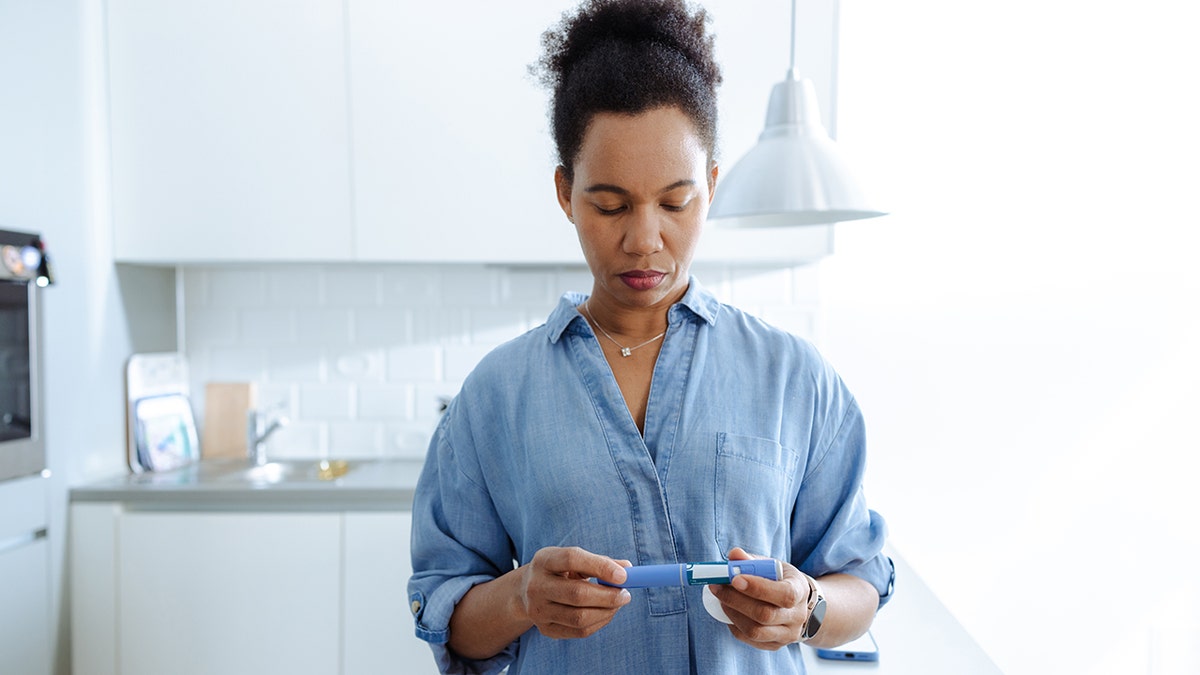Health
Enslaved African Americans in Maryland Linked to 42,000 Living Relatives

A construction team working on a highway expansion in Maryland in 1979 discovered human remains on the grounds of an 18th-century ironworks. Eventually, archaeologists uncovered 35 graves in a cemetery where enslaved people had been buried.
In the first effort of its kind, researchers now have linked DNA from 27 African Americans buried in the cemetery to nearly 42,000 living relatives. Almost 3,000 of them are so closely related that some people might be direct descendants.
Henry Louis Gates Jr., a historian at Harvard University and an author of the study, published on Thursday in the journal Science, said that the project marked the first time that historical DNA had been used to connect enslaved African Americans to living people.
“The history of Black people was intended to be a dark, unlit cave,” Dr. Gates said. With the new research, “you’re bringing light into the cave.”
In an accompanying commentary, Fatimah Jackson, an anthropologist at Howard University, wrote that the research was also significant because the local community in Maryland worked alongside geneticists and archaeologists.
“This is the way that this type of research should be performed,” Dr. Jackson wrote.
The cemetery was located at a former ironworks called the Catoctin Furnace, which started operating in 1776. For its first five decades, enslaved African Americans carried out most of the work including chopping wood for charcoal and crafting items like kitchen pans and shell casings used in the Revolutionary War.
Elizabeth Comer, an archaeologist and the president of the Catoctin Furnace Historical Society, said that some of the workers were most likely skilled in ironworking before being forced into slavery.
“When you’re stealing these people from their village in Africa and bringing them to the United States, you were bringing people who had a background in iron technology,” she said.
Upon their discovery, some of the remains were taken to the Smithsonian for curation. In 2015, the historical society and the African American Resources Cultural and Heritage Society in Frederick, Md., organized a closer look.
Smithsonian researchers documented the toll that hard labor at the furnace took on the enslaved people. Some bones had high levels of metals like zinc, which workers inhaled in the furnace fumes. Teenagers suffered damage to their spines from hauling heavy loads.
The identities of the buried African Americans were a mystery, so Ms. Comer looked through diaries of local ministers for clues. She assembled a list of 271 people, almost all of whom were known only by a first name. One family of freed African Americans, she discovered, supplied charcoal to the furnace operators.
From that list, Ms. Comer has managed to trace one family of enslaved workers to living people and one family of freed African Americans to another set of descendants.
At Harvard, researchers extracted DNA from samples of the cemetery bones. Genetic similarities among 15 of the buried people revealed that they belonged to five families. One family consisted of a mother laid alongside her two sons.
Following Smithsonian guidelines, the researchers made the genetic sequences public in June 2022. They then developed a method to reliably compare historical DNA to the genes of living people.
Éadaoin Harney, a former graduate student at Harvard, continued the genetic research after she joined the DNA-testing company 23andMe, focusing on the DNA of 9.3 million customers who had volunteered to participate in research efforts.
Dr. Harney and her colleagues looked for long stretches of DNA that contained identical variants found in the DNA of the Catoctin Furnace individuals. These stretches reveal a shared ancestry: Closer relatives share longer stretches of genetic material, and more of them.
The researchers found 41,799 people in the 23andMe database with at least one stretch of matching DNA. But a vast majority of those people were only distant cousins who shared common ancestors with the enslaved people.
“That person might have lived several generations before the Catoctin individual, or hundreds or thousands of years,” Dr. Harney said.
The researchers also found that the people buried at the Catoctin Furnace mostly carried ancestry from two groups: the Wolof, who live today in Senegal and Gambia in West Africa, and the Kongo, who now live 2,000 miles away in Angola and the Democratic Republic of Congo.
About a quarter of the individuals in the cemetery had only African ancestry. DNA from the rest typically showed traces of ancestry from Britain — the legacy of white men who raped Black women, as the authors noted in their study.
Most of the living people with links to the furnace reside in the United States. Almost 3,000 people had especially long stretches of matching DNA, which could mean they are direct descendants or can trace their ancestry to cousins of the Catoctin Furnace workers.
A strong concentration of these close relatives is in Maryland, Dr. Gates noted. That continuity contrasts with the Great Migration, which brought millions of African Americans out of the South in the early 20th century.
“The thing about Maryland is that it’s a border state,” Dr. Gates said. “What this means is that a lot of people didn’t leave, which is quite interesting.”
In advance of the publication of their paper, the researchers shared the results with the two families that Ms. Comer identified through her own research, as well as with the African American Resources Cultural and Heritage Society.
Andy Kill, a spokesman for 23andMe, said that the company was willing to share genetic results with relatives who participated in the new study. So far, the company hasn’t been asked.
But 23andMe does not have plans to notify the thousands of other customers who have a connection to the enslaved people of the Catoctin Furnace. When customers consent for their DNA to be used for research, the data is stripped of their identities to protect their privacy.
“We still have work to do on thinking about the best way to do that, but it’s something we would like to do at some point,” Mr. Kill said.
Jada Benn Torres, a genetic anthropologist at Vanderbilt University who was not involved in the research, said rushing out the results would be a mistake.
“To take this process slowly gives us time to think about what the different repercussions might be,” she said, “in terms of opening these boxes and looking in and finding answers that we didn’t even know we had questions about.”
The Catoctin Furnace is only one of many African American burial grounds scattered across the country. Alondra Nelson, a social scientist at the Institute for Advanced Study in Princeton, N.J., said that similar studies could be carried out with the remains found in them, so long as scientists partner with the people caring for the cemeteries.
“If these kinds of projects go forward, it is going to require researchers to have a real engagement with these well-established communities,” Dr. Nelson said.

Health
We Tried Three Doctor-Approved, Ozempic-Friendly Recipes | Woman's World

Use left and right arrow keys to navigate between menu items.
Use escape to exit the menu.
Sign Up
Create a free account to access exclusive content, play games, solve puzzles, test your pop-culture knowledge and receive special offers.
Already have an account? Login
Health
Weight-loss medications may also benefit common medical problem, study finds

Weight-loss medications known as glucagon-like peptide-1 (GLP-1) agonists, which have gained popularity for treating type 2 diabetes and obesity, have been shown to have the surprising secondary benefit of reducing alcohol intake.
A team of international researchers from Ireland and Saudi Arabia followed 262 adult patients with obesity who started taking two GLP-1 medications: liraglutide or semaglutide.
Among the regular drinkers, weekly alcohol intake decreased by 68%, from approximately 23 units of alcohol to around 8 units.
WEIGHT LOSS, DIABETES DRUGS CAN CAUSE MOOD CHANGES: WHAT TO KNOW ABOUT BEHAVIORAL SIDE EFFECTS
The findings were recently published in the journal Diabetes, Obesity and Metabolism and were also presented last week at the European Congress on Obesity in Spain.
GLP-1 agonists mimic a hormone called GLP-1, which is released from the gastrointestinal system after eating, according to study co-author Carel Le Roux, a professor at University College Dublin.
Weight-loss medications known as glucagon-like peptide-1 (GLP-1) agonists have been shown to have the surprising secondary benefit of reducing alcohol intake. (iStock)
These medications activate GLP-1 receptors in the brain, decreasing the sense of “reward” people feel after eating or drinking, eventually leading to reduced cravings for both food and alcohol, he told Fox News Digital.
“It is this commonality of function that suggests the GLP-1 receptors in the brain may be a therapeutic target for not just the disease of obesity, but also for alcohol use disorder,” the professor said.
Study findings
Before the participants started the weight-loss drugs, they self-reported their weekly alcohol intake, then were categorized as non-drinkers, rare drinkers or regular drinkers.
Approximately 72% had at least two follow-up visits and 68% reported regular alcohol consumption.
WEIGHT-LOSS DRUGS’ IMPACT ON CANCER RISK REVEALED IN NEW STUDY
After starting the weight-loss medications, the participants’ weekly average alcohol intake decreased by almost two-thirds overall — from approximately 11 units of alcohol to four units after four months of treatment with the GLP-1 agonists.
The reduction in alcohol use was comparable to the decrease that can be achieved by nalmefene, a drug that decreases the “buzz” feeling in people with alcohol use disorder in Europe, according to the researchers.

Among the regular drinkers, weekly alcohol intake decreased by 68%, from approximately 23 units of alcohol to around 8 units. (iStock)
For the 188 patients who were followed over an average of four months, none had increased their alcohol intake after starting the weight-loss medications.
Patients reported that after an evening meal, they were too full to have their usual drink — and when they did drink, they reported becoming full extremely quickly and drinking at a slower pace, Le Roux noted.
“The findings in this study suggest that we may have just found a therapeutic target for alcohol use disorder.”
This suggests that the experience was less enjoyable, partly due to the reduced rate of alcohol absorption.
Some patients also reported that they didn’t enjoy the flavor of the alcoholic beverages as much, and also that hangovers were much worse.
All of these experiences showed that the weight-loss medications create “guard rails” that prevent most patients from drinking excessively, giving them a degree of control over their alcohol intake, according to Le Roux.

After starting the weight-loss medications, the participants’ weekly average alcohol intake decreased by almost two-thirds overall. (iStock)
“The findings in this study suggest that we may have just found a therapeutic target for alcohol use disorder — the GLP-1 receptor,” the professor told Fox News Digital.
“This finding potentially opens the possibility of an entirely new pharmacological treatment paradigm, which could be used in conjunction with conventional methods, such as behavior therapy and group support.”
Potential limitations
The study was limited by its relatively small number of patients, the researchers acknowledged.
Also, the researchers were not able to verify the participants’ self-reported alcohol intake, and roughly one-third of them were not available for follow-up.
SEMAGLUTIDE FOUND TO HAVE SHOCKING BENEFIT FOR LIVER DISEASE PATIENTS IN NEW STUDY
There was also no control group, which means the researchers couldn’t prove that taking weight-loss medication reduces alcohol intake.

The main advantage of GLP-1 agonists is that they only need to be taken once a week and continue to work for the entire week. (iStock)
“Randomized, controlled trials with diverse patient populations — including patients diagnosed with alcohol use disorder — are needed to provide the quality and quantity of data that could be used to support an application for licensing the medication for the treatment of alcohol use disorder,” Le Roux said.
(One such trial is currently underway in Denmark.)
Study implications
With the current medications available to treat alcohol use disorder, the “major problem” is compliance, Le Roux said — “because the cravings for alcohol tend to come in waves.”
“This means a patient might be fully committed to treatment at one point in the week, but then stop taking the medication later in the week when a craving comes,” the professor added.

“This research suggests a promising ancillary benefit of GLP-1 analogs, potentially influencing cravings for alcohol and offering a new avenue for managing alcohol use disorder,” a physician said. (iStock)
There are currently three FDA-approved medications to treat alcohol use disorder: naltrexone (which helps decrease cravings by reducing the “buzz” feeling that comes with drinking alcohol); disulfiram (which helps some people avoid alcohol by making them feel sick when they drink), and acamprosate (which restores the balance of hormones in the brain to reduce cravings), according to the National Institute on Alcohol Abuse and Alcoholism.
CLICK HERE TO SIGN UP FOR OUR HEALTH NEWSLETTER
But less than 10% of people with alcohol use disorder get the proper treatment, with many resuming use within the first year of treatment, past research shows.
The main advantage of the GLP-1 agonists is that they only need to be taken once a week and continue to work for the entire week.

For the 188 patients who were followed over an average of four months, none had increased their alcohol intake after starting the weight-loss medications. (iStock)
Outside experts say the study’s findings highlight the potential of weight-loss medications to help treat alcohol use disorder.
“This research suggests a promising ancillary benefit of GLP-1 analogs, potentially influencing cravings for alcohol and offering a new avenue for managing alcohol use disorder,” Dr. Fatima Cody Stanford, obesity medicine physician at Massachusetts General Hospital and Harvard Medical School, who was not part of the study, told Fox News Digital.
For more Health articles, visit www.foxnews.com/health
“While the exact mechanisms are still being explored, the findings contribute to our understanding of the broader benefits of GLP-1 analogs beyond obesity treatment,” Stanford added.
Health
Surgeons Perform First Human Bladder Transplant

Surgeons in Southern California have performed the first human bladder transplant, introducing a new, potentially life-changing procedure for people with debilitating bladder conditions.
The operation was performed earlier this month by a pair of surgeons from the University of California, Los Angeles, and the University of Southern California on a 41-year-old man who had lost much of his bladder capacity from treatments for a rare form of bladder cancer.
“I was a ticking time bomb,” the patient, Oscar Larrainzar, said on Thursday during a follow-up appointment with his doctors. “But now I have hope.”
The doctors plan to perform bladder transplants in four more patients as part of a clinical trial to get a sense of outcomes like bladder capacity and graft complications before pursuing a larger trial to expand its use.
Dr. Inderbir Gill, who performed the surgery along with Dr. Nima Nassiri, called it “the realization of a dream” for treating thousands of patients with crippling pelvic pain, inflammation and recurrent infections.
“There is no question: A potential door has been opened for these people that did not exist earlier,” said Dr. Gill, the chairman of the urology department at U.S.C.
Pushing the Envelope
Until now, most patients who undergo a bladder removal have a portion of their intestine repurposed to help them pass urine. Some receive an ileal conduit, which empties urine into a bag outside the abdomen, while others are given a so-called neobladder, or a pouch tucked inside the body that attaches to the urethra and allows patients to urinate more traditionally.
But bowel tissue, riddled with bacteria, is “inherently contaminated,” Dr. Gill said, and introducing it to the “inherently sterile” urinary tract leads to complications in up to 80 percent of patients, ranging from electrolyte imbalances to a slow reduction in kidney function. The loss of the intestinal segment can also cause new digestive issues.
Dr. Despoina Daskalaki, a transplant surgeon at Tufts Medical Center who was not involved in the new procedure, said advances in transplant medicine (from critical life-sustaining organs, like hearts and livers, to other body parts, like faces, hands, uteri and penises) had led doctors to start “pushing the envelope.”
“They’re asking: ‘Why do we have to put up with all the complications? Why don’t we try and give this person a new bladder?’” Dr. Daskalaki said.
In late 2020, Dr. Nassiri was in his fourth year of residency at the University of Southern California when he and Dr. Gill sat down in the hospital cafeteria to begin brainstorming approaches. After Dr. Nassiri began a fellowship on kidney transplantation at U.C.L.A., the two surgeons continued working together across institutions to test both robotic and manual techniques, practicing first on pigs, then human cadavers, and finally, human research donors who no longer had brain activity but maintained a heartbeat.
One of the challenges of transplanting a bladder was the complex vascular infrastructure. The surgeons needed to operate deep inside the pelvis of the donor to capture and preserve a rich supply of blood vessels so the organ could thrive inside the recipient.
“When we’re removing a bladder because of cancer, we basically just cut them. We do it in less than an hour on a near-daily basis,” Dr. Gill said. “For a bladder donation, that is a significantly higher order of technical intensity.”
The surgeons also chose to conjoin the right and left arteries — as well as the right and left veins — while the organ was on ice, so that only two connections were needed in the recipient, rather than four.
When their strategy was perfected in 2023, the two drew up plans for a clinical trial, which eventually would bring the world’s first recipient: Oscar.
An Ideal First Candidate
When Mr. Larrainzar walked into Dr. Nassiri’s clinic in April 2024, Dr. Nassiri recognized him. Almost four years earlier, Mr. Larrainzar, a husband and father of four, had been navigating end-stage kidney disease and renal cancer, and Dr. Nassiri helped remove both of his kidneys.
But Mr. Larrainzar had also survived urachal adenocarcinoma, a rare type of bladder cancer, and a surgery to resect the bladder tumor had left him “without much of a bladder at all,” Dr. Nassiri said. A normal bladder can hold more than 300 cubic centimeters of fluid; Mr. Larrainzar’s could hold 30.
Now, years of dialysis had begun to fail; fluid was building up inside his body. And with so much scarring in the abdominal region, it would have been difficult to find enough usable length of bowel to pursue another option.
“He showed up serendipitously,” Dr. Nassiri said, “but he was kind of an ideal first candidate for this.”
On a Saturday night earlier this month, Dr. Nassiri received a call about a potential bladder match for Mr. Larrainzar. He and Dr. Gill drove straight to the headquarters of OneLegacy, an organ procurement organization, in Azusa, Calif., and joined a team of seven surgeons working overnight to recover an array of organs from a donor.
The two brought the kidney and bladder to U.C.L.A., then stopped home for a shower, breakfast and a short nap. They completed the eight-hour surgery to give Mr. Larrainzar a new bladder and kidney later that day.
Dr. Nassiri said that kidney transplants can sometimes take up to a week to process urine, but when the kidney and bladder were connected inside Mr. Larrainzar, there was a great connection — “immediate output” — and his creatinine level, which measures kidney function, started to improve immediately. Mr. Larrainzar has already lost 20 pounds of fluid weight since the surgery.
The biggest risks of organ transplantation are the body’s potential rejection of the organ and the side effects caused by the mandatory immune-suppressing drugs given to prevent organ rejection. That is why, for Dr. Rachel Forbes, a transplant surgeon at Vanderbilt University Medical Center who was not involved in the procedure, the excitement is more tempered.
“It’s obviously a technical advance,” she said, but “we already have existing options for people without bladders, and without the downside of requiring immunosuppression.” Unless a patient is — like Mr. Larrainzar — going to be on those medications anyway, “I would be a little bit nervous that you would be exchanging some complications for others,” she said.
A new bladder transplant also does not have nerve connections in the recipient, so while it works well as a storage organ, doctors did not know whether Mr. Larrainzar would ever be able to sense a full bladder, let alone hold and empty it naturally. They spoke about catheters, abdomen maneuvers and eventually developing an on-demand bladder stimulator to help with the release.
But at a follow-up appointment on Thursday morning — just two days after Mr. Larrainzar was discharged from the hospital — Dr. Nassiri removed the catheter and gave him fluids, and Mr. Larrainzar immediately felt that he could urinate.
Dr. Nassiri called it a miracle, then phoned Dr. Gill, who was in a U.S.C. operating room, and exclaimed two words: “He peed!”
“No way! What the hell?” Dr. Gill said. “My jaw is on the floor.”
After finishing the surgery, Dr. Gill drove straight to U.C.L.A. and watched Mr. Larrainzar do it again.
“Of course, this is very, very early. Let’s see how everything goes,” Dr. Gill cautioned. “But it’s the first time he has been able to pee in seven years. For all of us, this is huge.”
Mr. Larrainzar, exhausted, smiled, and Dr. Nassiri brought him a bottle of mineral water to celebrate.
-

 Austin, TX1 week ago
Austin, TX1 week agoBest Austin Salads – 15 Food Places For Good Greens!
-

 Politics1 week ago
Politics1 week agoPresident Trump takes on 'Big Pharma' by signing executive order to lower drug prices
-

 News5 days ago
News5 days agoAs Harvard Battles Trump, Its President Will Take a 25% Pay Cut
-

 Technology1 week ago
Technology1 week agoMexico is suing Google over how it’s labeling the Gulf of Mexico
-

 Business1 week ago
Business1 week agoIn-N-Out Burger adds three new California locations to list of 2025 openings
-

 Politics1 week ago
Politics1 week agoDHS says Massachusetts city council member 'incited chaos' as ICE arrested 'violent criminal alien'
-

 News1 week ago
News1 week agoWhy Trump Suddenly Declared Victory Over the Houthi Militia
-

 Politics5 days ago
Politics5 days agoRepublicans say they're 'out of the loop' on Trump's $400M Qatari plane deal














